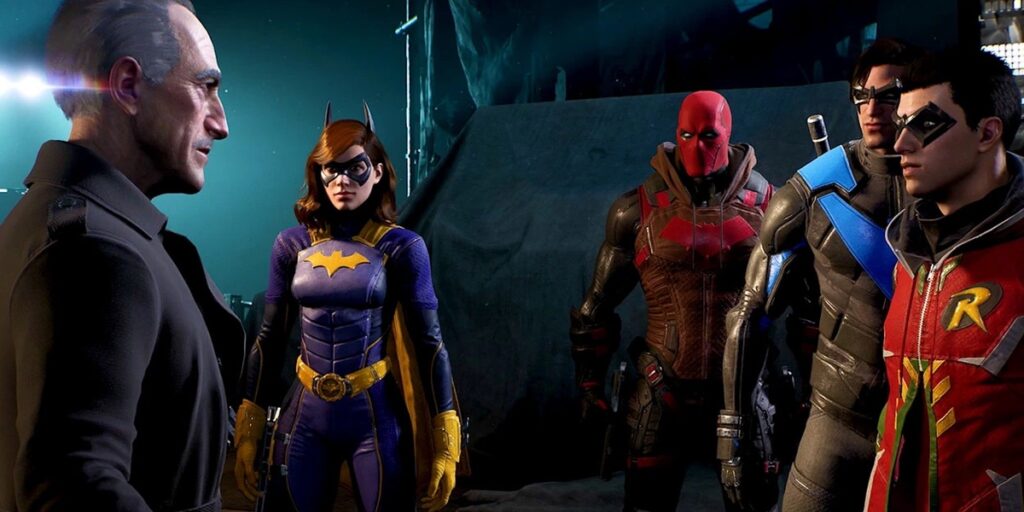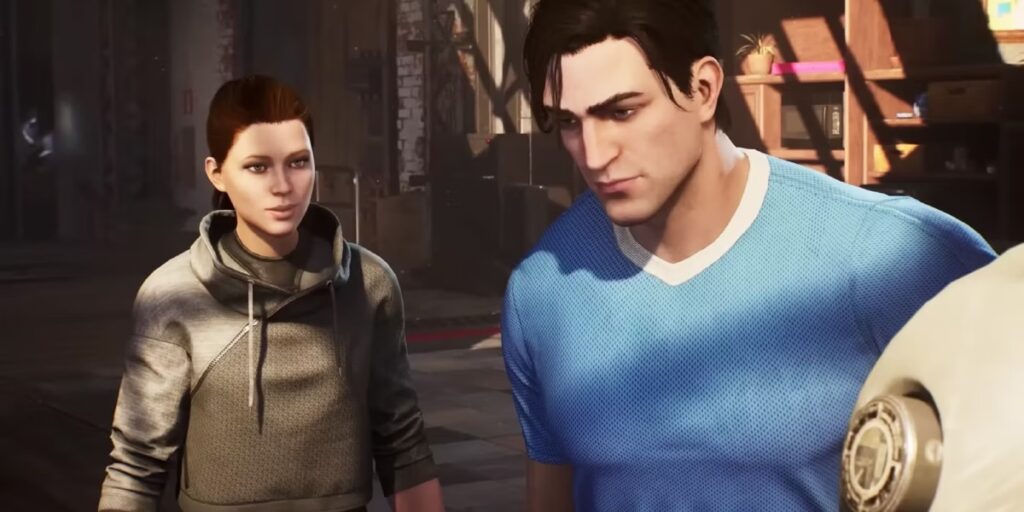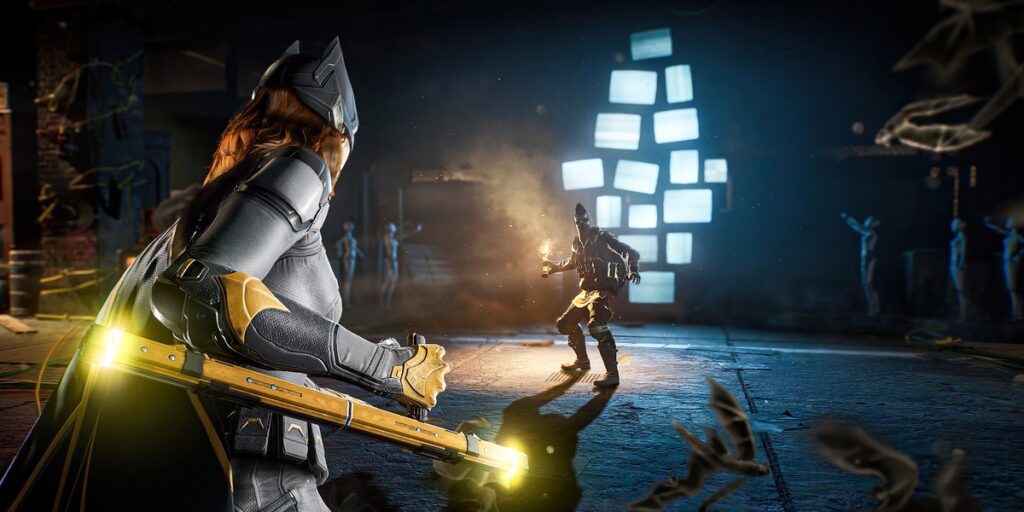Gotham Knights may not be as critically acclaimed or universally beloved as Rocksteady’s Batman series, but its story – which touches on some potent themes – is one of the game’s more memorable aspects.
Gotham Knights‘ narrative is all the more notable because of the game’s multi-character design. With a Batman-shaped hole at its centre, the focus is on Nightwing, Batgirl, Robin, and Red Hood as they become the protectors of Gotham City while dealing with the loss of their mentor.
In the GDC talk Gotham Knights: Simultaneous and Immersive Cinematic Storytelling for the Batman Family, Wilson Mui, cinematic director at WB Games Montréal, spoke about the studio’s approach to cinematic design and the desire to give centre-stage to all four Gotham Knights.
“In our game, we had the unique opportunity to capture a glimpse of them outside of their superhero alter egos,” says Mui. “What was it like behind the superhero mask at their most vulnerable time?”
Mui’s team aimed to deliver a narrative for each hero that explored the themes of family, emotional pain, and grief using impactful cinematic storytelling techniques.
“This was our biggest challenge in terms of scope and complexity,” says Mui. “With four interchangeable heroes, the challenge was to create a unique cinematic experience for Nightwing, Red Hood, Batgirl, and Robin, while staying true to their backstories and characterisation.”

The intention was to develop engaging stories, dynamic relationships, and memorable character moments that would resonate with the player and stop them from using the dreaded skip button. It was no small task.
“We had four unique and interchangeable heroes at any point in the game,” explains Mui. “We had two-player untethered co-op, an open-world built on streaming and unloading of content, and 16 unique and customisable suits per hero that we carried over into cinematics.”
With the exception of the game’s prologue and ending, 98% of the game’s cinematics are created in real-time, in-engine. This choice gave the team a pipeline to quickly customise each scene depending on which hero the player controls.
Gotham Knights features two main categories of cinematics. There are those set in the game’s Belfry location – which serves as a new Batcave for the four heroes – and those featured in missions. Each category required a different approach, says Mui.
“Within the Belfry, we have a substantial number of scenes that focus on creating human connections for our heroes while conveying important information for missions and character arcs. With all four heroes – and sometimes with Alfred – our sit-rep and debrief scenes start or summarise the end of a mission with important narrative and gameplay information.”

Despite having four leads, it was essential that the cinematic framing did not favour a specific character. “Love all your children equally,” implores Mui.
“It was important to make sure the player didn’t feel like they were watching a cinematic that their character was not involved in, so scenes were set up with the heroes equally involved in the action, dialogue, and camera shots,” he says.
During production, the motion capture team would also rotate the lead actors on a daily basis to ensure equity. And even when a hero is in the background of a scene, retaining their personality and mannerisms ensures their characterisations are kept intact.
“The rule was simple: Always assume the player is watching their character only and not the others in the scene,” says Mui.
Another deliberate narrative choice was to explore the emotional depth of each character with emotionally charged scenes depicting the fallout of Batman’s death.
“This was a different approach. The venerable superhero,” admits Mui. “In exploring more intimate interactions between two or three characters with these standalone character arcs, balanced screen time wasn’t as important. But seeing them in everyday situations kept the performances grounded and showed how they coped with each other as a group.”
The game’s mission-based cinematics posed a different challenge. These scenes had to deliver the same narrative information, no matter which hero the player was using. The team had to develop a solution that avoided creating four (or more) custom versions of each scene. But as each hero has different personality traits, movements, fighting styles, and skeleton sizes, a one-size fits all approach was off the table.
The answer was a four-in-one flexible template Mui’s team called the Quad, a master template in which the fundamentals of each cinematic were the same. Some script, voice-over, and camera positioning elements differed slightly, depending on the hero, but all camera cuts and timings were the same whether the scene featured Robin, Batgirl, Red Hood, or Nightwing.

“Creating a production-ready template drove the timing and technicalities of all the other variations, with the same timing and edited camera cuts,” explains Mui. “It wasn’t a simple copy and paste. Every stage needed to be planned out carefully as changes affected every department down the line and needed to be controlled to manage scope.”
Although the templated method might seem restrictive, Mui says that it opened up creative opportunities to sprinkle flavour and personality across each cinematic while ensuring the overall narrative was consistent for each hero.
“The big question was how can we make each hero’s version of the same scene feel unique,” says Mui. “This is actually where we had the most fun, working with the actors as we tried to nail each character’s behaviour, mannerisms, and movements to make each scene feel different while keeping the same timing overall.”
The only variations came from a hero’s dialogue and physical moves, such as attacks and dodges. The enemy animations, however, are exactly the same in every version.
Despite the success of the Quad, some key moments had to be created four times over. In these ‘platinum’ cinematics, the action and dialogue are unique to each hero and their backstories. Although these scenes cover the same narrative beats, they have completely different camera cuts, dialogue, and timings.
“The platinums were definitely my team’s least favourite to make – due to cost – but certainly the most impactful on all fronts,” reflects Mui. “There’s no way we would have delivered the cinematics on Gotham Knights without the dedicated and unwavering support from our production team.”
“The rule was simple: Always assume the player is watching their character only and not the others in the scene.”
The end product is one of Gotham Knights‘ more successful elements: a story that gives the player the feeling of agency, no matter which superhero they embody.
“We’ve come a long way in creatively telling stories in video games, and I can’t wait to see where we’re going next,” concludes Mui. “But cinematics still have a tough time since we still have the skip button to deal with!”
“As game developers and storytellers, it boils down to thinking outside the box while creating captivating content for the audience. So, keep taking risks to tell the stories we need to tell.”
Gotham Knights is available now on Windows PC, PlayStation 5, and Xbox Series X|S.
Read more about video game development in our GDC archive.






